Sending PostGrid Print & Mail with Zapier
When your business requires sending mail in an effective in scalable manner, PostGrid has your solution. In this guide, we will examine how to send Print & Mail using Zapier's integration with PostGrid.
Zapier is a product that allows end users to integrate the web applications they use and automate workflows.
Overview
There are five stages in the process of sending letters with PostGrid:
- Creating a Zap
- Creating a Trigger for the zap
- Creating an Action for the zap
- Linking your PostGrid account
- Filling in required fields for your order
Zapier Dashboard
We begin our process right at the dashboard after logging in.
Creating a Zap
On the Zapier dashboard, click the orange Create Zap button placed on top left of the page.

Creating a Trigger
A trigger is an event that starts the Zap.
In this guide, we will use a sample spreadsheet present on Google Sheets. We thus select the 'Google Sheets' app and set our trigger event to 'New Spreadsheet Row'.
Next, we select our account for the trigger app. In this case, we sign in to our Google account to allow Zapier access to our Google Sheets spreadsheets.
Our next step is to select the desired spreadsheet and worksheet.
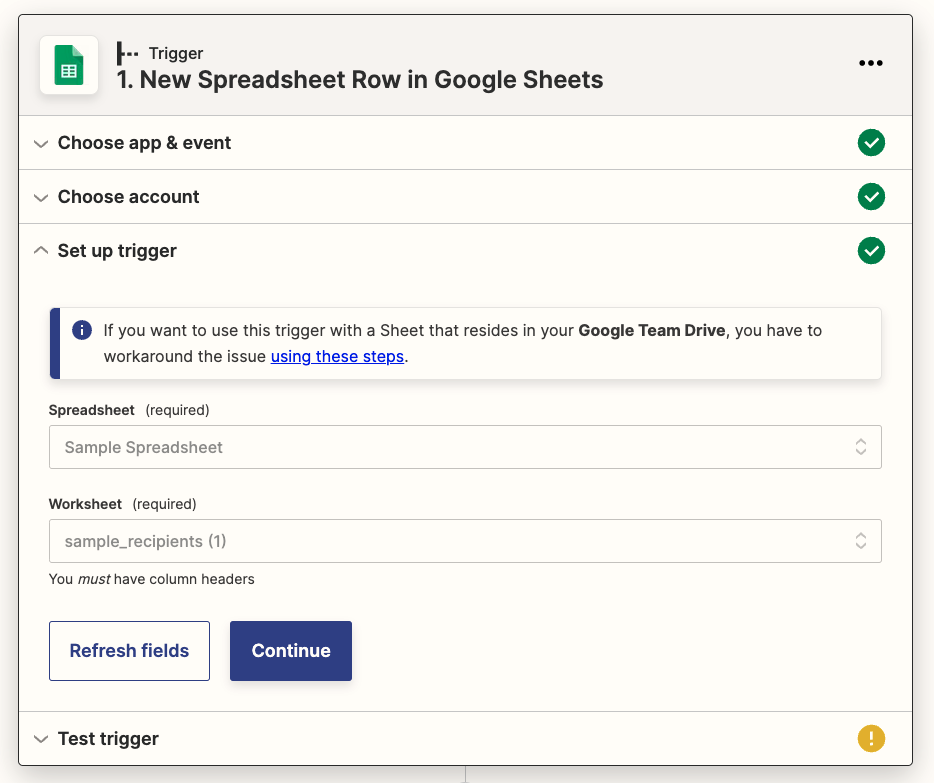
We can then choose to test our trigger by clicking continue and then the Test Trigger button to confirm that we have chosen our options correctly in the previous steps.
Zapier returns a piece of information from our provided spreadsheet. Verify this information and click continue to move on to the next step, creating an action for our zap.
Creating an Action
An action is an event the Zap performs after it starts.
In this step, we search for and select the PostGrid Print & Mail app.
Next, we are required to select one of the following events from the Event dropdown.
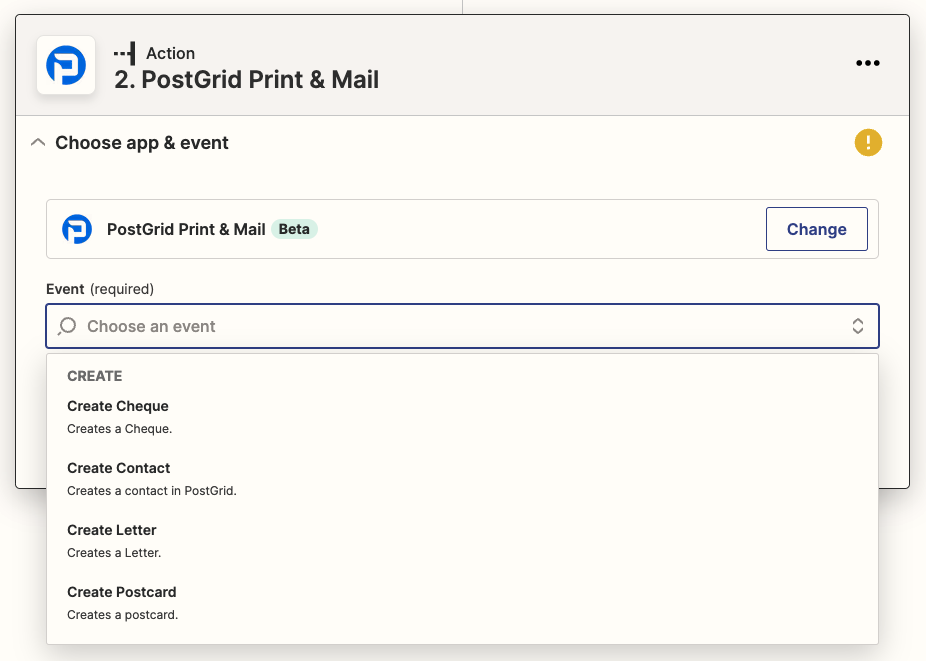
In our case, we wish to create a letter so we choose that option and then click continue.
We are then asked to select our PostGrid Print & Mail account. To do this, we enter the API Key that can be found in the Settings section of our PostGrid dashboard.
Note: Please be sure to enter the 'Test API Key' if you wish to test orders and the 'Live API Key' only if you are sure about your order.
Once we have selected our account, we move on to entering the given fields for our letter. It is important to enter all required fields to continue to the next step.
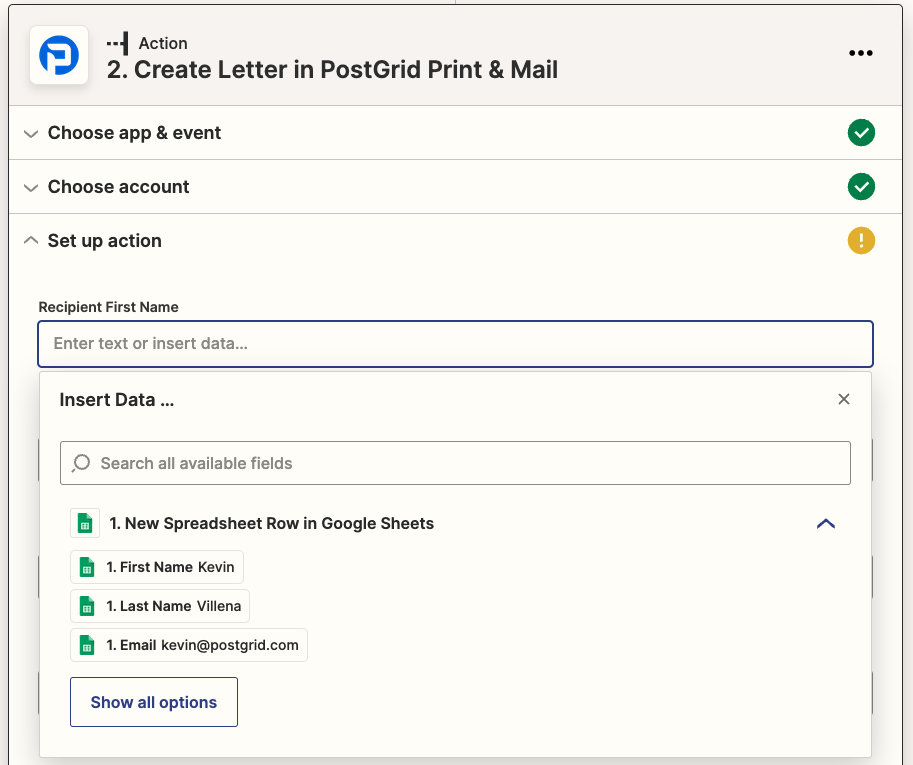
As shown above, Zapier gives us the option to enter text or insert variable data into the fields from the provided spreadsheet.
Creating or retrieving the HTML
If you've created your template using HTML, you can use that directly in Zapier. If you've used our template editor to create your template (see Creating Templates using the Dashboard), you can copy its HTML for use on Zapier via the Raw Data section:
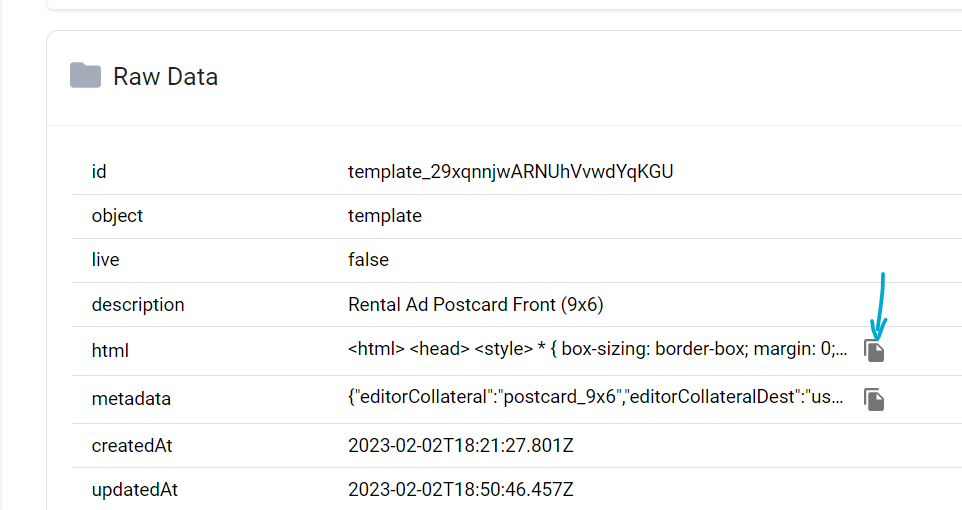
Copying raw data from an editor-generated template.
You can paste this into the HTML section on Zapier. You can then insert your variables directly into the HTML just like you would with the Recipient First Name and other fields.
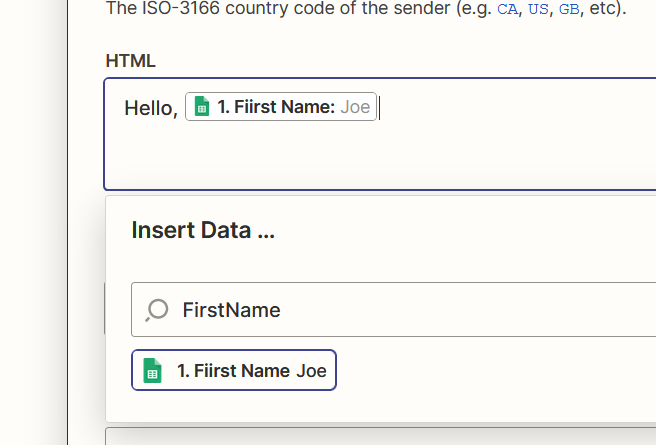
Inserting a variable into the HTML section of the Zap.

Some required fields like the Color and Double sided take the values of true or false. We want our letter to be of color but not double sided so we select True for the Color field and False for the Double sided field.
If the Continue button is disabled, we have missed filling a required field and we return to click continue once we have filled all required fields.
Zapier, then prompts us to verify the data we entered and to test creation of the letter.
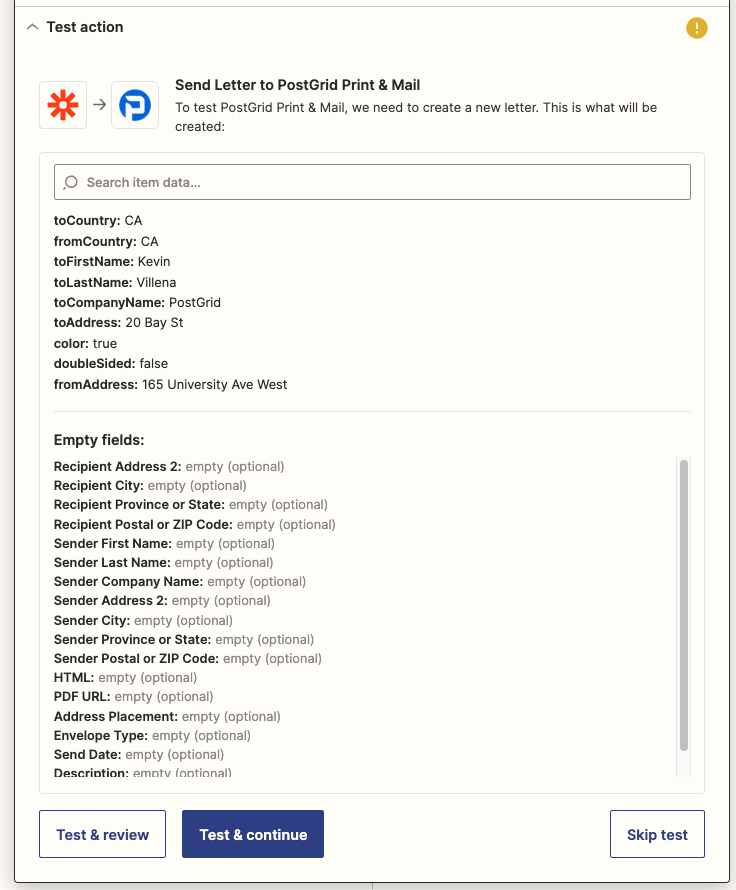
It is recommended to proceed with the 'Test and Review' button.
At this stage, the zap can be published if the testing provides desired results. One can also chain similar triggers and actions to further enhance their workflow. Zapier provides built-in actions such as the following:

